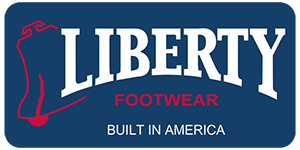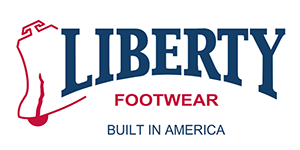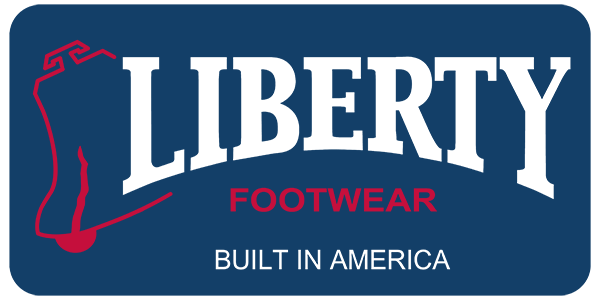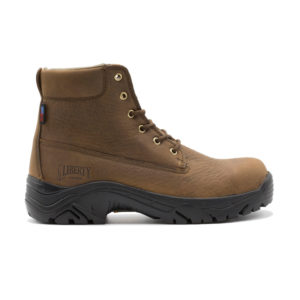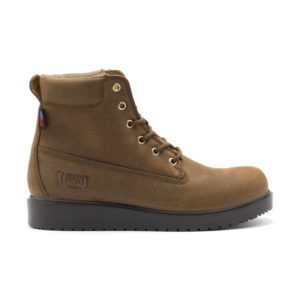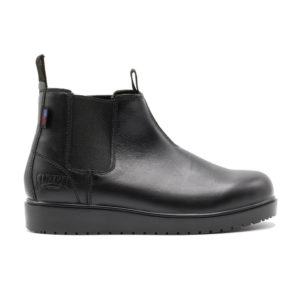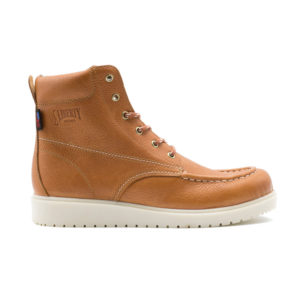As the old saying goes — no two feet are the same. Many shoe-fitting experts believe that over 65 percent of individuals have different left and right feet. Fortunately, American shoemakers solved this issue back in the late 19th century. Over many decades, these American innovators established and developed rules for grading ‘shoe lasts’ — the name for shoe sizing molds — systematically, on a mass scale.
The shoe last represents an approximation of foot shape, around which a shoe or boot is built. Originally made from chiseled stone and eventually from aged maplewood, they suffered from numerous shortcomings. Wooden lasts shrink in dry, cold winters, and swell in hot and humid summers. Weather and heavy use damaged these wooden lasts and they had to be replaced often. Today shoe lasts are made from polypropylene, for general construction, and from aluminum alloys for more precision and stability for direct injection. Their dimension tolerance is around .001” — ensuring consistency in production and the finished product.
American shoe last grading, when correctly followed, offers the best fitting footwear anywhere in the world. As opposed to French (continental) or metric grading, the differences between sizes are smaller — so customers can easily find the best fit between whole and half sizes and medium, wide and extra wide widths. Liberty Footwear lasts are developed by American last-makers on a proven base model that served tens of millions of customers over the last 30 years.
To innovate our process and outcome, we adjusted toe profile, instep and heel parts by grading them arithmetically, as opposed to geometrically, normally used in military footwear manufacturing. Our grading ensures that the length and girth change of the next last size or width is the same on small and large sizes. Geometric grading is scaled so that smaller last sizes are graded at shorter increments and larger sizes at bigger increments.
With the growing popularity of famous brand sneakers and regular cost cutting of production even in Asia, American consumers have been conditioned to forgo fit and comfort for style, color and low prices. Most popular athletic brands offer their shoes in one width, with some low price brands only offering whole sizes. For example, many customers who should wear wide width shoes compensate by wearing shoes one or even two sizes up to find a size that works. This creates the problem of shoes being too long results in foot movement within the shoe and dangerous toe dragging while walking. On the other hand, customers with narrow feet — rather than leaving enough toe room upfront for correct toe-off — instead buy smaller shoes, causing painfully tightness and even toe blisters.
Liberty Footwear takes great pride in educating customers about how shoe sizing and grading works. The length of our lasts — and our boots — range from whole size to whole size changes 1/3” and the girth 1/4”. The girth of the same size from medium width to extra wide grows 3/8”, while the length stays the same. We can also adjust boot size by varying the thickness of removable foot beds to find the best fit, or even stretching the boots with our lasts. Another method involves individually hand-stretching the boots in tight spots — usually in the ball or instep — with a ball-and-ring metal tool.
Finally, we offer a unique service that few shoe retailers in the country can, because no one else sells boots factory direct. Because of this, we often can fit those who have different left and right feet with different size or width boots, making sure each foot is comfortable and properly fit. This automatically includes extra space of about 1/2” in front of the longest toe in soft toe boots, and about 2/3” in safety toe boots. This extra space is necessary for stretching the feet while walking without rubbing your toes on the inside liner.
For example, a customer came in wearing size 10 medium sneakers to compensate for his size 8 wide feet. In order to accommodate his feet, those size 10 shoes feel good width-wise, because they are 1/2” wider, but they are also 2/3” longer with too much ‘dead’ space in the toe. To correct this, we can fit him in size 8 EW boots where his feet are correctly positioned lengthwise, while comfortably snuggled in 3/8” wider boots. If necessary, we can also stretch those size 8 EW boots even more in the forepart, while keeping the back area untouched for a cradle-like fit.
Another scenario we encountered involved a customer who came in wearing size 11 extra wide boots. The left boot fit just right, while the Right was too loose. We found out that his left foot had surgery not long ago and as a result, swells regularly. To prevent pain during the day, this customer bought a pair of big boots. Careful measuring of his feet on our Brannock device and further examination revealed that his left foot was size 11 extra wide — but his right foot was size 10 medium. We fit the customer with different size and different width boots to ensure both feet were comfortable. Even when we do not have misfit boots in stock, we can make them specifically for each foot.
Why do we go to such extremes? Correct fitting and comfortable boots remain our passion. We have life-long shoemaking experience, equipment and components to serve our customers in such a way — still at affordable prices. This is what local shoe production can offer local customers. And thanks to improvements in mobile scanning technology, we plan to offer this service nationwide.
For more information on how custom fitting relieves foot issues from the experts at Liberty Footwear, please contact us here, shop for our products or call our factory directly at 616.930.3060.
